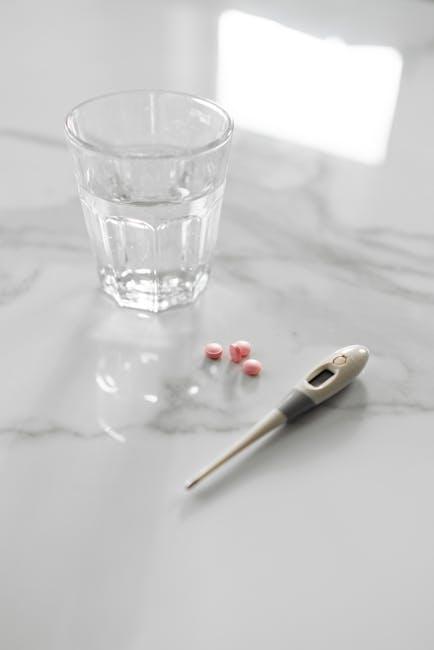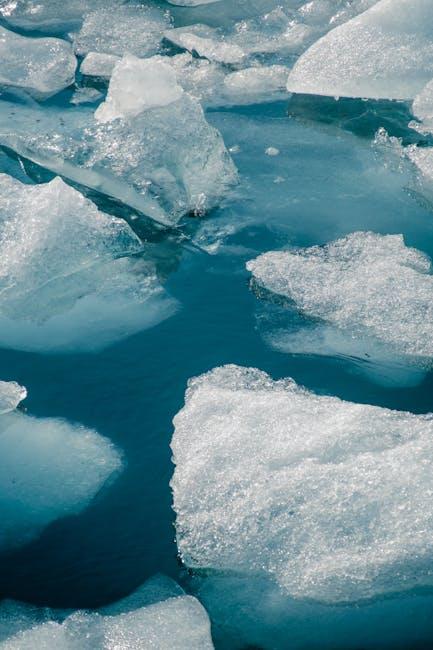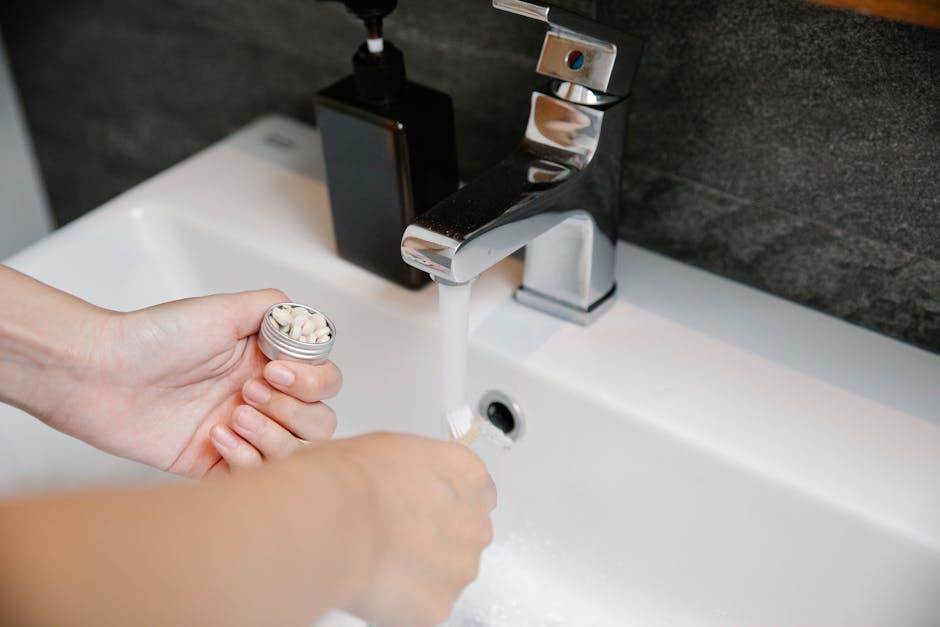Water is a subtle yet powerful force that shapes our daily routines in ways we often overlook. From the refreshing splash that awakens us in the morning to the soothing warmth that signals relaxation at day’s end, the temperature of water quietly influences our habits, moods, and even productivity. Whether it’s the brisk chill that sharpens our senses or the gentle heat that calms our nerves, understanding how water temperature affects our daily lives reveals the intricate dance between nature and human behavior. This article explores the nuanced impact of water temperature, uncovering its role beyond mere comfort and into the realm of everyday wellness and routine.
Understanding the Impact of Water Temperature on Morning Routines

Water temperature plays a subtle yet powerful role in shaping the energy and efficiency of your morning. Cold water jolts the senses awake, activating the nervous system and increasing alertness. It’s a quick, natural caffeine boost without the jitters-perfect for those who need a sharp mental reset before the day begins. On the other hand, warm water offers a gentle, soothing transition from sleep to wakefulness, loosening tense muscles and calming the mind. This warmth can foster a reflective, mindful start to your day, making each breath feel more intentional. Deciding between cold or warm water essentially influences not just how refreshed you feel but also how your body prepares for the hours ahead.
Choosing your ideal morning water temperature can be broken down into key effects:
- Cold Water: Enhances alertness, decreases fatigue, and promotes faster metabolic activation.
- Warm Water: Relieves muscle stiffness, supports digestion, and helps reduce morning stress levels.
| Water Temperature | Primary Morning Effect | Best For |
|---|---|---|
| Cold (50-60°F) | Stimulates alertness | Those needing energy boost |
| Warm (95-105°F) | Soothes muscles & mind | Stress relief and gentle wake-up |
| Room Temp (~70°F) | Balanced hydration | Neutral and easy digestion |
The Role of Water Temperature in Hydration and Health

The temperature of the water you drink can subtly influence how your body absorbs and utilizes it throughout the day. Cold water is often chosen for quick refreshment, especially after physical activity, as it helps lower your core temperature and can invigorate your senses. On the other hand, warm water gently soothes the digestive system, potentially enhancing nutrient absorption and relieving discomfort like bloating or cramps. For many, the choice between cold and warm water becomes more than a preference-it turns into a habit that supports daily wellbeing.
Consider these effects of water temperature on daily hydration:
- Cold water can stimulate metabolism and awaken the body but may sometimes cause throat irritation or restricted circulation in sensitive individuals.
- Warm water tends to relax muscles and improve digestion, making it a favored choice in the morning or before bedtime.
- Lukewarm water, a balance between both, is often easiest on the stomach and suitable for consistent hydration throughout the day.
| Water Temperature | Impact on Body | Ideal Time to Drink |
|---|---|---|
| Cold (Below 15°C) | Boosts alertness, cools body | Post-exercise, hot days |
| Lukewarm (25-35°C) | Gentle on digestion, steady hydration | Throughout the day |
| Warm (Above 40°C) | Relaxes muscles, aids digestion | Morning, before bed |
Adjusting Daily Activities Based on Seasonal Water Temperature Changes

As water temperatures shift with the changing seasons, so too must the rhythms of our daily routines. Cooler water often signals a need for more insulation and layered clothing, especially for those who engage in outdoor activities such as swimming, fishing, or boating. Conversely, warmer water invites longer hours spent in or near the water, encouraging hydration and sun protection as key habits to adopt. Adjusting meal times and food choices also aligns with water temperature; colder temperatures might inspire heartier, warming meals, while warmer days call for light, refreshing dishes to keep energy levels balanced.
Understanding how water temperature impacts daily living extends beyond personal comfort to influence practical decisions. Consider these quick adjustments:
- Exercise timing: Early mornings or late evenings when water is coolest in summer, and midday when warmed up in winter.
- Clothing choices: Waterproof and wind-resistant gear in colder months; breathable, quick-dry fabrics as temperatures rise.
- Water usage: Modulating shower durations and temperatures to conserve energy and maintain skin health.
| Season | Water Temp Range (°C) | Activity Adaptation |
|---|---|---|
| Winter | 5-15 | Shorter swims, thermal layers |
| Spring | 15-20 | Moderate exposure, gradual hydration increase |
| Summer | 20-30 | Extended water time, sun protection |
| Autumn | 15-20 | Transitional wear, balanced activity |
Practical Tips for Optimizing Water Temperature in Everyday Use

Maintaining the right water temperature in daily activities can significantly enhance comfort and efficiency. For example, while washing hands, water that is too hot may cause dryness or irritation, whereas lukewarm water helps preserve natural skin oils. When bathing or showering, a slightly warm temperature between 98°F and 105°F soothes muscles without stripping away moisture. Adjusting temperatures according to seasons can also save energy-cooler in summer and warmer in winter-optimizing your utility consumption without sacrificing comfort.
Implementing simple strategies can make a noticeable difference. Consider the following practical tips:
- Use thermostatic mixing valves: These devices blend hot and cold water to maintain a consistent, safe temperature, reducing the risk of scalding.
- Install point-of-use water heaters: They provide instant hot water for specific tasks, cutting down on water waste during waiting times.
- Regularly check water heater settings: Keeping your heater set around 120°F balances safety, comfort, and energy efficiency.
- Test water temperature before use: Simple but effective for avoiding unexpected discomfort, especially with children and elderly family members.
| Task | Ideal Water Temperature | Benefit |
|---|---|---|
| Hand Washing | 90°F – 100°F | Prevents dryness and irritation |
| Dishwashing | 110°F – 120°F | Efficient grease removal |
| Showering | 98°F – 105°F | Comfort and hydration |
| Laundry | 130°F – 140°F | Effective stain removal |
Final Thoughts
As we navigate the flow of our daily routines, the subtle shifts in water temperature ripple through our habits in ways both surprising and profound. From the warmth that soothes morning rituals to the chill that refreshes midday moments, water’s thermal touch shapes our comfort, health, and even productivity. Understanding this quiet influence invites us to become more mindful stewards of our everyday choices, tuning in to the gentle currents that guide us-one drop, one degree at a time.











